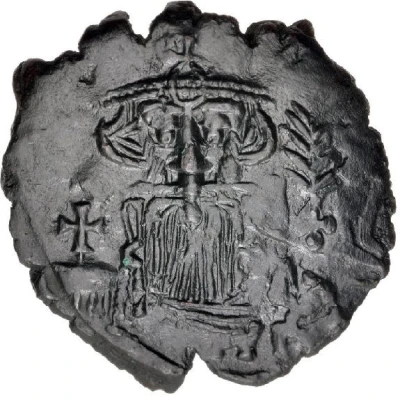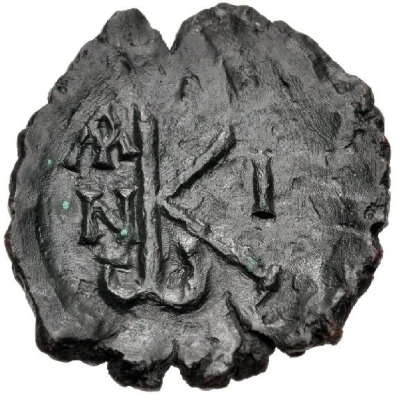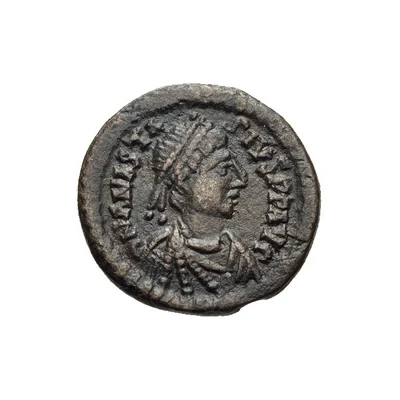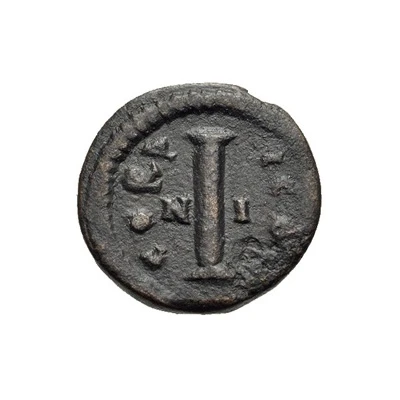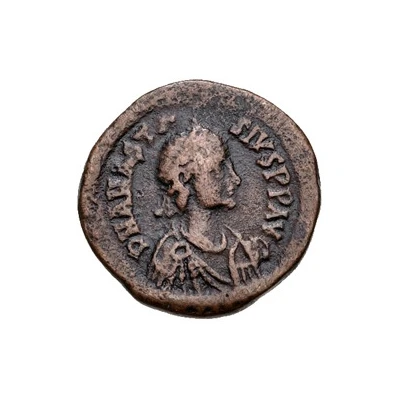
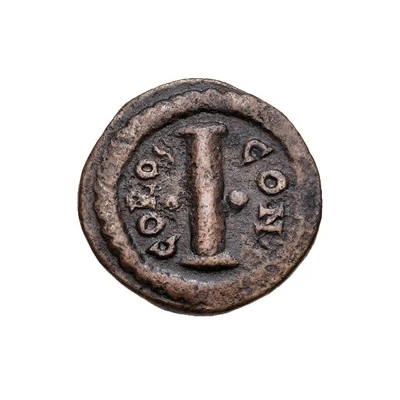

10 Nummi - Anastasius I Dicorus Constantinopolis, First Small Module Emission ND
| Copper | 2.27 g | 16 mm |
| Issuer | Byzantine Empire (Byzantine states) |
|---|---|
| Emperor | Anastasius I Dicorus (491-518) |
| Type | Standard circulation coin |
| Years | 498-507 |
| Value | Decanummium = 10 Nummi (1⁄720) |
| Currency | First Solidus Nomisma (498-720) |
| Composition | Copper |
| Weight | 2.27 g |
| Diameter | 16 mm |
| Shape | Round (irregular) |
| Technique | Hammered |
| Orientation | Variable alignment ↺ |
| Demonetized | Yes |
| Updated | 2024-10-04 |
| Numista | N#297604 |
|---|---|
| Rarity index | 93% |
Reverse
Legend around large I surmounted by cross, two or four pellets around I
Scripts: Greek, Latin
Lettering:
CONCORD(I)
I
Unabridged legend:
CONCORDIA
I
Translation:
Concord
I
Comment
First reform small module coinage. From the first primary emission (498-507).
The first primary emission began with the reform of the monetary system in 498 and ended with the beginning of the new indictional cycle on the 1st of September 507.
The decanummia of the first reform were struck to a theoretical weight standard of 2.27g or 1/144th of a Roman pound.
Legend for the obverse varieties exist, but are all based on the base form of “D N ANASTASIVS PP AVG”
On the reverse both “CONCORD” and “CONCORDIA” are attested. On some dies there may be two pellets on either side instead of one, but the meaning of this is unclear. It may have been a simple error or an attempt at distinguishing officinae.
Interesting fact
One interesting fact about this coin is that it features an image of Anastasius I Dicorus, who was the Byzantine Emperor at the time of its minting, on one side, and a depiction of the Virgin Mary and the Christ child on the other. This highlights the influence of Christianity during the Byzantine Empire and the importance of religious symbols in the empire's coinage.
